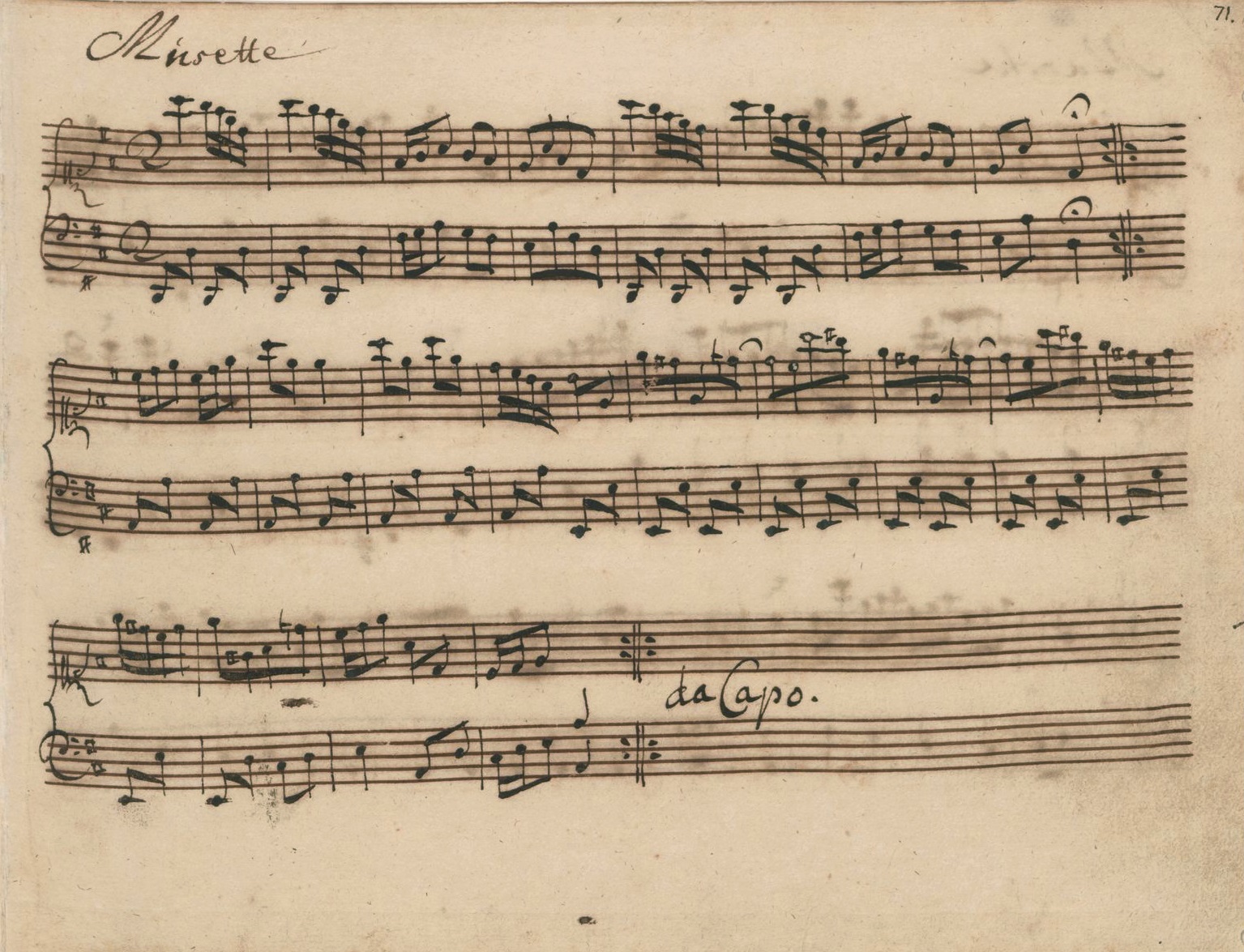Musette in D Maj. BWV Anh. 126

Musette in D Maj. BWV Anh. 126
Piano: Roberto Daina
You can purchase these recordings in HD quality (44.100 Hz 16 bit)
by logging in to the site and linking to the following page:
HISTORICAL NOTES
This piece is the 22nd in the "Notenbüchlein für Anna Magdalena Bach" [Notebook for Anna Magdalena Bach]. Anna Magdalena Bach-Wilcke was the second wife of Johann Sebastian Bach. This notebook, which dates back to 1725, includes numerous compositions connected with members of the Bach family, Johann Sebastian and some of his sons, as well as many pieces by other authors.
This Musette, together with many other smaller pieces from the same collection, has created some attribution problems, so more modern and authentic editions indicate “composer unknown” at the beginning, indicating that, although not excluding its possible paternity to Johann Sebastian, it cannot be guaranteed either.
CHARACTERISTICS OF THE PIECE
This Musette BWV Anh. 126 merits some attention, due to its widespread notoriety. From a compositional point of view, the first phrase in the bass part is a drone on the tonic note, figured and ostinato, a type of writing that resembles the familiar buzzing sound of the "Musette de cour”, referred to in the title, upon which is superimposed a more rhythmical rather than melodic musical design. This line alternates with a second short contrasting phrase in unison thereby interrupting the monotony.
The central part that follows sees the drone note moving on successive dominants while the upper part maps out an interesting chromatic line, interspersed with broad melodic leaps.
Formally the piece is organized according to the pattern:
AI - B - AII
after which the entire first part resumes and concludes the piece.
Interestingly, Prof. David Schulenberg in his book “The Keyboard Music of J.S. Bach” notes that the title of the song "Musette" is not exhaustive, pointing out that the rhythm of the piece refers to another ancient dance of Polish origin: the murky (so-called after its city of origin: Murcki, today a district of Katowice), an eccentric dance characterized just by the use of broken octaves in the bass line.
This type of configuration is in fact called a "Murky bass”. He also emphasizes that the small chromatic section in the central part is probably used to evoke a popular folk atmosphere.
PERFORMANCE NOTES
The performance of this Musette was conceived to preserve its rich variety of timbre, that is to say the contrast between the elements in the first part as well as the contrast between the rhythmic element and the daintiness of the chromatism in the central part.
The sound of the broken octaves in the bass is obtained using a delicate movement of the fingers, while the staccato notes are often executed by means of short rebounds of the forearm; the cantabile parts are executed without leaning on the notes, sometimes with finger articulation in a combined activity so as to facilitate fluency.
The speed is moderate but not excessively so, so as not to deprive the piece of a pleasant sensation of fluidity.
CURIOSITY
There is a hilarious parody of this Musette by Bobby McFerrin (Voice) and Yo-Yo Ma (Cello):
Tullio Forlenza
(Trad.: Sara Rosenman)

